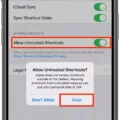If you own an Apple device, chances are you’ve heard of iCloud before. It’s Apple’s cloud storage service that allows users to store photos, videos, documents, and more in the cloud. Additionally, iCloud is compatible with a wide range of Apple products such as the iPhone, iPad, and MacBook Pro.
In this blog post, we will explain how to log into your iCloud account from your MacBook Pro. By logging into iCloud on your MacBook Pro, you can access your files from anywhere with an internet connection. Here’s what you need to do:
1. Open the System Preferences on your MacBook Pro.
2. Select “Apple ID” from the sidebar menu and click “Overview” in the main window.
3. Enter your Apple ID and password when prompted and click “Sign In”.
4. Once logged in, you will now be able to access all of your data stored in iCloud Drive on your Macbook Pro.
That’s it! You have now successfully logged into iCloud on your Macbook Pro and can access all of your data stored in the cloud whenever you need it – no matter where you are. With iCloud offering 5GB of free storage space for every user (upgradable to 2TB), there is plenty of room to store all of your important documents and media files securely in the cloud!
Troubleshooting iCloud Login Issues on Mac
If you’re having trouble logging into iCloud on your Mac, the first step is to make sure that you’re entering the correct Apple ID and password. If that doesn’t work, try restarting your Mac and signing out of iCloud. You can do this by going to Apple > System Preferences > Apple ID, signing out, and then signing in again with your Apple ID and password. If that still doesn’t work, it’s possible that there might be an unexpected problem with your Mac or iCloud account. In this case, you may need to contact Apple Support for further assistance.

Source: apple.stackexchange.com
Troubleshooting Issues with Connecting Macbook Pro to iCloud
If your Macbook Pro is having difficulty connecting to iCloud, there are several potential causes. First, make sure you have the latest version of macOS installed on your computer. If that’s not the issue, it’s possible that your Apple ID password needs to be updated. You can do this by going to Apple ID > Password and Security in System Preferences/System Settings. Additionally, if you’re still having issues, try signing out of iCloud on your Mac and signing back in by navigating to Apple ID > Overview and clicking Sign Out. If none of these steps work, contact Apple Support for further assistance.
Logging Into iCloud Account on a Computer
To sign in to your iCloud account on a computer, first, visit the iCloud website at https://www.icloud.com/. Then, enter your Apple ID (which is usually the same as your email address) and password. If two-factor authentication is enabled for your account, you’ll also need to enter a code that can be sent by text message or generated with an authentication app. Once you’ve entered these details correctly, click Sign In and you will have access to all of the features of iCloud from your computer.
Connecting a Mac to iCloud
Yes, you can connect your Mac to iCloud. To do this, open System Settings or System Preferences on your Mac and click on Apple ID. Then click on iCloud. Here you will be able to select which apps you would like to connect with iCloud. You can choose from Mail, Contacts, Calendars, Reminders, Safari, Notes, Keychain, and more. Once selected, those apps will be synced automatically with any other devices that are connected to the same Apple ID.
Troubleshooting Issues with iCloud on a Laptop
If your iCloud isn’t working on your laptop, there could be a few different reasons. First, make sure that you’re using the latest version of Windows on your PC. Additionally, check that you meet the iCloud recommended system requirements for PC. If you don’t meet those requirements, iCloud may not work properly.
Second, ensure that all of your iCloud settings are set up correctly on your computer. This includes making sure that iCloud is enabled in System Preferences and make sure that any files or folders you want to sync with iCloud are selected in Finder on a Mac or File Explorer on a PC.
Third, check for any software updates for both Windows and iCloud to make sure they are up to date. Also, make sure you have enough storage space available in iCloud; if it is full, files will not be able to sync correctly.
Finally, try restarting both your laptop and the iCloud app and see if this resolves the issue. If none of these steps helps fix the problem with your iCloud not working on your laptop, contact Apple Support for further assistance.
Syncing an iPhone and Macbook Pro with iCloud
To sync your iPhone and Macbook Pro with iCloud, first, make sure you are signed in to the same iCloud account on both devices. On your iPhone, go to Settings > [your name] > iCloud and make sure all the data you want to be synced is turned on. On your Macbook, go to System Preferences > iCloud and again ensure all the data you want to be synced is selected. Finally, make sure both devices are connected to a Wi-Fi network and that your devices have enough power to maintain their connection. Once these conditions are met, your devices will automatically sync over iCloud whenever a change is made.

Source: discussions.apple.com
Using the Same iCloud for iPhone and Mac
Yes, it is recommended that you use the same iCloud account on both your iPhone and Mac. This allows you to keep your files, photos, and other information in sync across both devices. By using the same iCloud account, you can also access your purchase history from either device. Additionally, using the same iCloud account will allow you to use Apple services such as Apple Pay and iCloud Keychain across both devices.
Manually Syncing Mac to iCloud
To manually sync your Mac to iCloud, you’ll need to sign in to iCloud on your Mac. You can do this by going to the Apple menu > System Preferences > Apple ID or iCloud. Then, enter your Apple ID and password to sign in. After you’re signed in, you can choose which items and services you would like to sync with iCloud. To manually sync these items, select the box next to each item that you would like to sync. When you’re done, click “Apply” at the bottom of the screen. This will force iCloud Drive to begin syncing your selected data and files with iCloud.
Conclusion
In conclusion, iCloud is a powerful cloud-based storage and synchronization service from Apple that makes it easy to store and access your data, documents, photos, and more on all of your devices. With iCloud, you can share files with others and collaborate on projects with ease. It also keeps your data safe and secure in the cloud while allowing you to quickly access it when you need it. iCloud is a great tool for organization, collaboration, and security.








